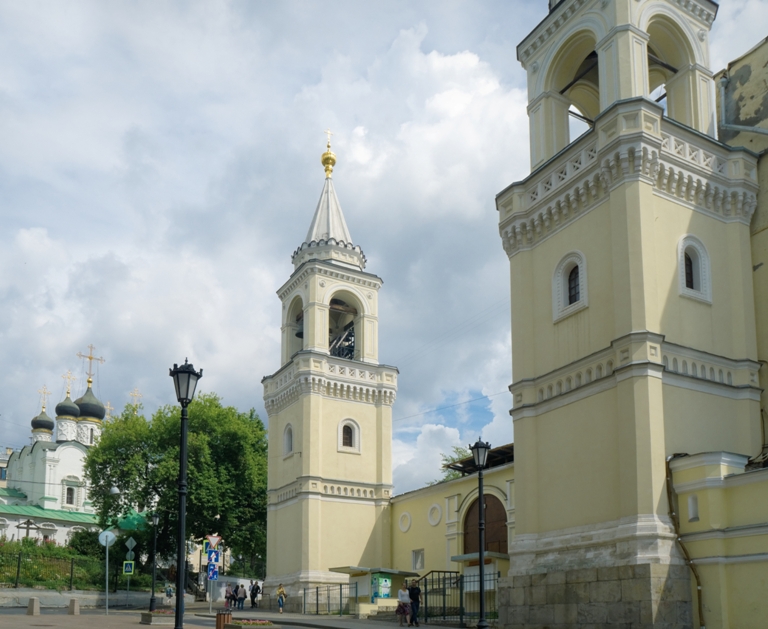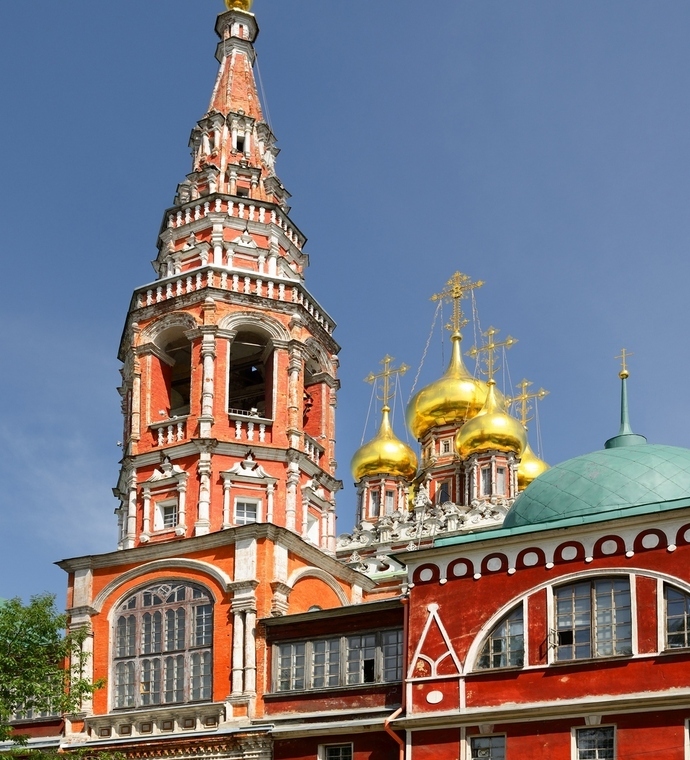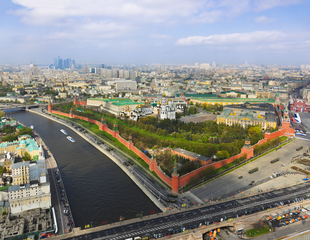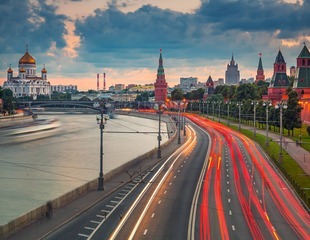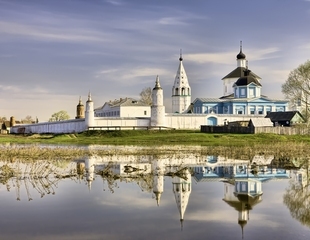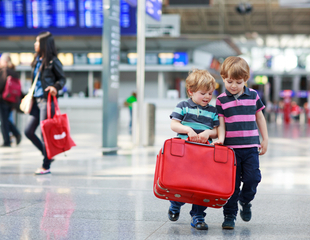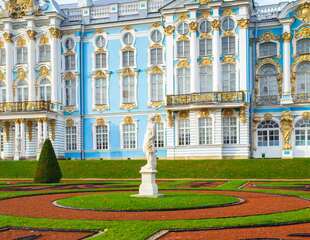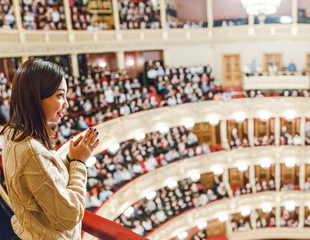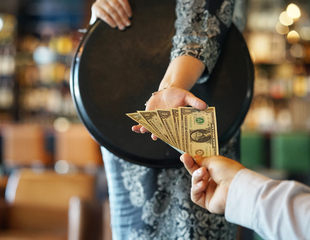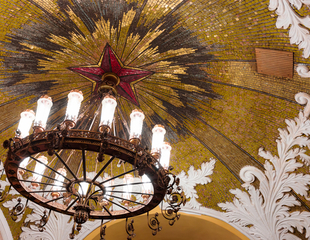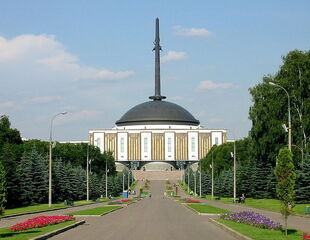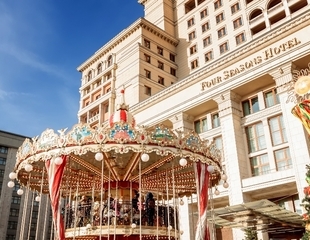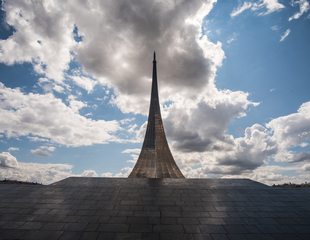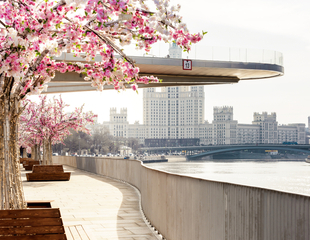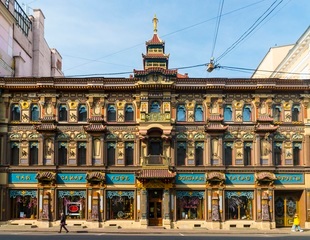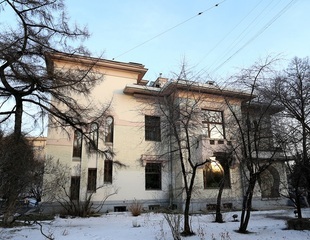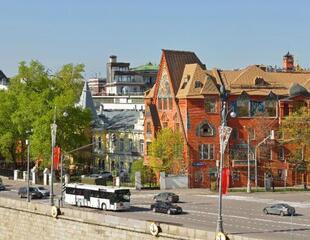Zamoskvorechye is quite a unique historic district located on the other side of the Moscow river, if look from the Kremlin side. It was being formed in the 13th century, and this area was built close to the high road to the Golden Horde, a part of the Mongol Empire. The place was called Zarechye — it means the territory behind the river. Now, we’ve selected ten of the most exciting buildings in different parts of Zamoskvorechye to make a pleasant stroll around it and get used to its unique style.
Zarechye was thought to be a kind of suburb for Moscow. There were many so-called Sloboda, or free settlements, which were populated with people of the same professions — for example, gardeners (Sadovniki) or leather-dressers (Kozhevniki). As time went by, many merchants (kuptsy) became Zamoskvorechye’s inhabitants, as long as the land there was very cheap and archers (streltsy). Thanks to the merchantsэ slow lifestyle, Zamoskvorechye was thought to be a village inside the big city. The way of life there was very peaceful and calm. Merchants and the members of their families cared only about their shops, tea-drinking, and the coziness of their homes. Although many things had changed after the Emancipation reform in 1861, Zamoskvorechye managed to stay the same. This unhurried lifestyle was praised in the works by famous Russian playwright Alexander Nikolaevich Ostrovsky, born in Zamoskvorechye, in Malaya Ordynka Street, which is now a museum. Time passes, everything changes, but even now, Zamoskvorechye, although it became more industrial and vibrant, stays as cozy as it always was.
Book a guided tour to Zamoskvorechie01Averkiy Kirillov Chambers
This house will be attractive to those who love authentic antiquity. No one will tell when this building appeared on Bersenevskaya dam, but one may say that its look was formed when Averkiy Kirillov, the famous merchant, and public figure, became the property owner. These chambers look in a way as they were not spoilt with the industrialization, as they were in 1657 — apparently, this is a year of their foundation.
Now, this house is considered one of the most mysterious buildings of the Tsar’s Moscow. There is a unique stone on the second floor of this house which tells that the construction began in 1657 — quite a long time ago. Averkiy Kirillow, the well-known merchant and owner of many Moscow stores and lands, and even salt mines in Solikamsk (Sol Kamskaya, as it was called), was the first documented owner of these chambers — they were given to him by Tsar Alexey Mikhaylovich.
Unfortunately, Averkiy Kirillov was killed during the archers’ riot in 1682. His house was sold to the Polish knight Maslov who rebuilt the front side in a European style. The decoration of Averkiy Kirillov’s chambers is unique as long as it looks exquisite, and sometimes the very similar decorative elements look different. The house was slightly rebuilt in the 19th century for Moscow archeological society, and now it’s a home for Russian Cultorology Institute. It’s not always open for visitors, but sometimes different exhibitions are being held here. Near the Averkiy Kirillov’s house, there is a beautiful ancient church of Nikola on Bersenevka resembling some fairytale Russian house.
02The House Museum of the playwright A.N. Ostrovsky
The museum was opened in 1984 in the house where the famous playwright was born. It’s an authentic 19th-century mansion made of wood, which depicts the type of Zamosvorechye housing very well.
The cozy place on Malaya Ordynka where the Ostrovsky House Museum is located in Moscow is pretty rare for such a busy capital. It’s surrounded by a lovely little garden that can tell the story of the old Zamoskvorechye district. It’s luck that this house is not a reconstruction — it’s an entire building where the famous playwright Ostrovsky was born.
On the first floor, there are rooms of the apartment that belonged to Ostrovsky’s father. The second floor is dedicated to the history of the staging of Ostrovsky’s plays. The museum has an extensive collection of private belongings of the famous playwright and the actors who took part in his plays in theatres. Many things tell the story of Zamoskvorechye itself.
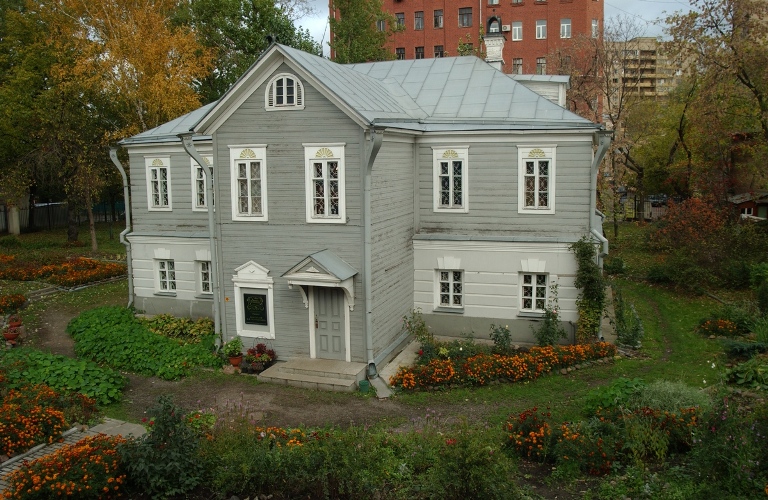
03The Writers’ House
This is a typical example of Soviet classicism and a great prewar building. It is located between Bolshaya Ordynka Street and the famous Tretyakov gallery. It was the “Soviet Writer” cooperative society property, and many Russian authors lived there — such as Ilya Ilf and Evgeny Petrov, Boris Pasternak, and Agniya Barto.
The image made this house of the writers’ home in St. Petersburg after the foundation of the Writers’ Union in 1934. It was thought to be where all the authors would live together, like in a big communal apartment. The first part was built in 1937, and it took the place of a bit of a mansion close to the Tretyakov gallery. There are also 17th-century boyar chambers, which were saved and appeared to be in the inner yard of the newly built house.
The Writers’ House was unusual because of its height. When everything started to change, some thought that soon most buildings in Moscow would be much taller. But, despite this fact, Zamoskvorechye hadn’t changed a lot. So, this typical Soviet house which had been completed after the Great Patriotic War was not so typical for this area. By the way, this is the same house where Margarita, a heroine of the famous Mikhail Bulgakov’s novel “The Master and Margarita,” made a tremendous mess to take revenge on criticistLatunsky. In this house lived Agniya Barto, Veniamin Kaverin, Yury Olesha, Mikhail Prishvin, Valentin Kataev, Konstantin Paustovsky, Boris Pasternak, and many other famous Russian writers.
04St. Clement’s Church
St. Clement’s Church is the biggest in Zamoskvorechye. It’s known since 1612 when it was mentioned as a citadel for the battle between Russian forces and Polish-Lithuanian invaders. It’s located close to PyatnitskayaStreet.
Modern St. Clement’s Church is known since 1740 — in November of that same year, the Russian Empress Elizaveta Petrovna, the daughter of Peter the Great, was crowned. Instead of the more ancient one, the church was built, which was featured in the battle with Polish-Lithuanian invaders in the 17th century.
What is the most unique about this baroque church is the fact that interior 18th-century decoration is ultimately saved inside. Besides, it has five domes, unlike most Moscow churches, and resembles a St. Petersburg-like church a little. In 1934, the church served as an archive for Russian State Library till 2008. Now, restorations of the exteriors continue.
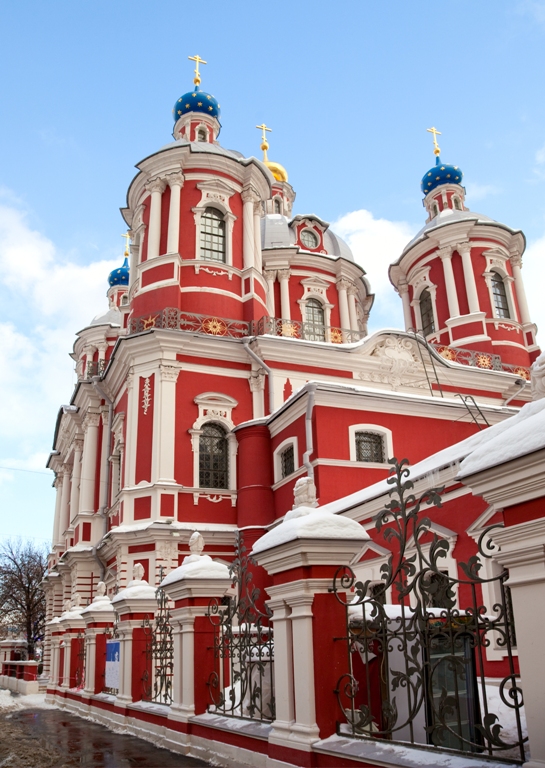
05The furrier Galperin’s House
This house is located on one of the essential Zamoskvorechye streets — Pyatnitskaya. It was built in the years 1909-1910, designed by the famous architect Fyodor Shekhtel with modern and gothic elements at the same time.
This house number 13 on PyatnitskayaStreet was built especially for furrier IlyaMarkovichGalperin, who planned to open a fur store there. That’s why the building has two large showcase windows from both sides of the main entrance. The architect of this house was the famous Fyodor Shekhtel. This building is often called it's emerald.’ The building outside is faced with dark green glazed ceramic tiles — this method is called ‘kabanchik’ (literally ‘the little hog’). This method was often used in modernist architecture.
Besides, the building has very bright gothic features. The Galperin’s house is quite a constant building for Moscow because furs have been sold there even in Soviet times and later. In Galperin’s times, there was also a haberdashery store on the base floor. Not so long ago, a restaurant was opened there.
06Kozhevniheskiye baths (bani)
This bathhouse was built in the 1930s to make a broad highway out of Kozhevnicheskaya Street, which now begins near the Paveletsky rail terminal. Now this bathhouse, being home to an entertaining center, may be interesting for its majolica outside.
This building has everything that one may wish — SPA, bowling, restaurant, karaoke, beauty procedures, but baths. This building appeared on KozhevnicheskayaStreet in the early 1930s. It looks just like the ordinary Soviet house made in the then-popular style of constructivism. But one detail makes it unique for Moscow in general and for Zamoskvorechye in particular.
It is a large majolica panel at the top of the building, depicting the happy lifestyle of a person living in the USSR. This work may even be compared to the famous “Princesselointaine” (“PrintsessaGryoza”) panel after Mikhail Vrubel's renowned painting, located at the “Metropol” hotel near Moscow Kremlin.
07Kozhevennaya Sloboda chambers
This is the oldest building in the ancient Kozhevniki free settlement (Sloboda). Presumably, this house dates back to the 17th century. It’s not known for what this house was used, but once there were city customs there.
The free settlement of leather-dressers in Moscow dates back to the 16th century. Most probably, Kozhevennayasloboda chambers date back to the 17the century, but their purpose is not so clear. This two-storied building made of red brick is located in Kozhevnicheskayastreet, close to the Moscow river. There’s a large chamber on the first floor, and perhaps living quarters are located on the second floor. Maybe the first floor was some office for people who were into leather trimming.
After Peter the Great decided to eliminate Moscow's free settlements (slobodas), these chambers became home to the customs as long as close to them there was a ferry across the Moscow river. While at Soviet time, there was some dormitory there, after that the house might be demolished, but thanks to the restorers it was left. Now, this building is the office of the educational magazine “Knowledge is Power” (“Znaniye — sila”).
08The Rekk Mansion
This house located at the beginning of Pyatnitskaya street is known as one of the “House with Lions” Moscow buildings. It was built in 1897 in the style of rococo, which is quite rare for Russian architecture.
The Rekk Mansion was built in 1897 due to the order of VilhelminaRekk, the wife of the famous entrepreneur YakovAndreevichRekk’s who was into the building business. Construction began when it was the property of previous owners. Still, the house project was fundamentally altered by the same architect Sergey Shervud, the son of Vladimir Shervud. This person built the Moscow History Museum and Plevna Chapel in the center of Moscow.
This two-storied house is a brilliant example of eclecticism in sculpture. It’s richly decorated with different types of details. The most remarkable element is two lions lying near the columns. Now the Rekk Mansion is curated by the Ministry of Energy of the Russian Federation, which promised to restore the house.
09The Demidov House
This is also a house located on Pyatnitskaya Street. It was a property of Ammos Demidov, the well-known owner of the mine and metallurgical works in the Urals. It’s best known for its cast-iron grid around the house and tall Empire-style columns.
This house was built after the fire destroyed the previous two-storied building in the early classicism of the 18th century. Thus, that building became the basement for this house built after the project of one of the most famous Moscow architects Osip Ivanovich Bove who was responsible for restoring Moscow after the 1812 fire.
It was a house of Ammos Demidov, the person of the well-known dynasty of the Urals mine and metallurgical works owners. The main detail for which this house is thought to be unique is the six-column portico, typical for Moscow Empire style. This house is also known for its unique cast-iron grid, which is believed to be made in the Urals. Now, the metro lies under this house, and it’s a bit of great luck that the building was forced in the 19th century, and it doesn’t look weak because of that fact.
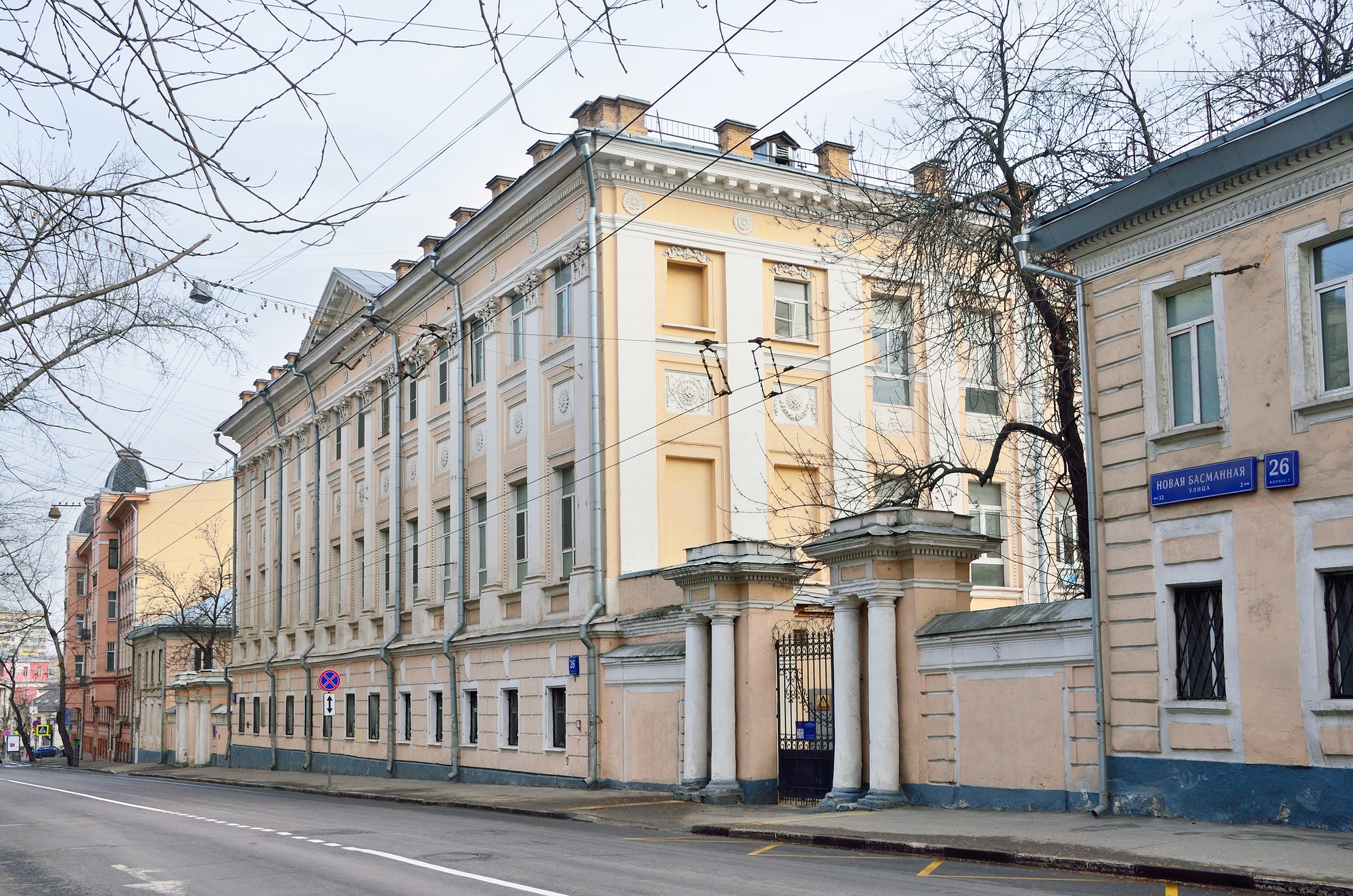
10The Church in the Name of Beheading John the Baptist under the Bor
It’s probably one of the oldest Zamoskvorechye churches, with the belfry, which is considered one of the tallest in Moscow.
The place where this church is located is known since 1415. The ancient Ivanovsky monastery stood here, and in 1514 the stone church was added to wooden buildings around. The person who was involved in its construction was Aleviz Novy, one of the Moscow Kremlin builders.
This church was being renovated several times. At first, it was rebuilt at the end of the 17th century, and in a hundred years, the farmstead around it was also renovated. Closer to the end of the 18th century, the new belfry was built near Pyatnitskaya street — it was made mainly because one may see the church hidden in the typical Zamoskvorechy backyard for sure. The belfry itself is the main sightseeing element of this church complex as long as it combines classicism details and building methods of the middle of the 18th century and defines the Zamoskvorechye panorama a lot.
